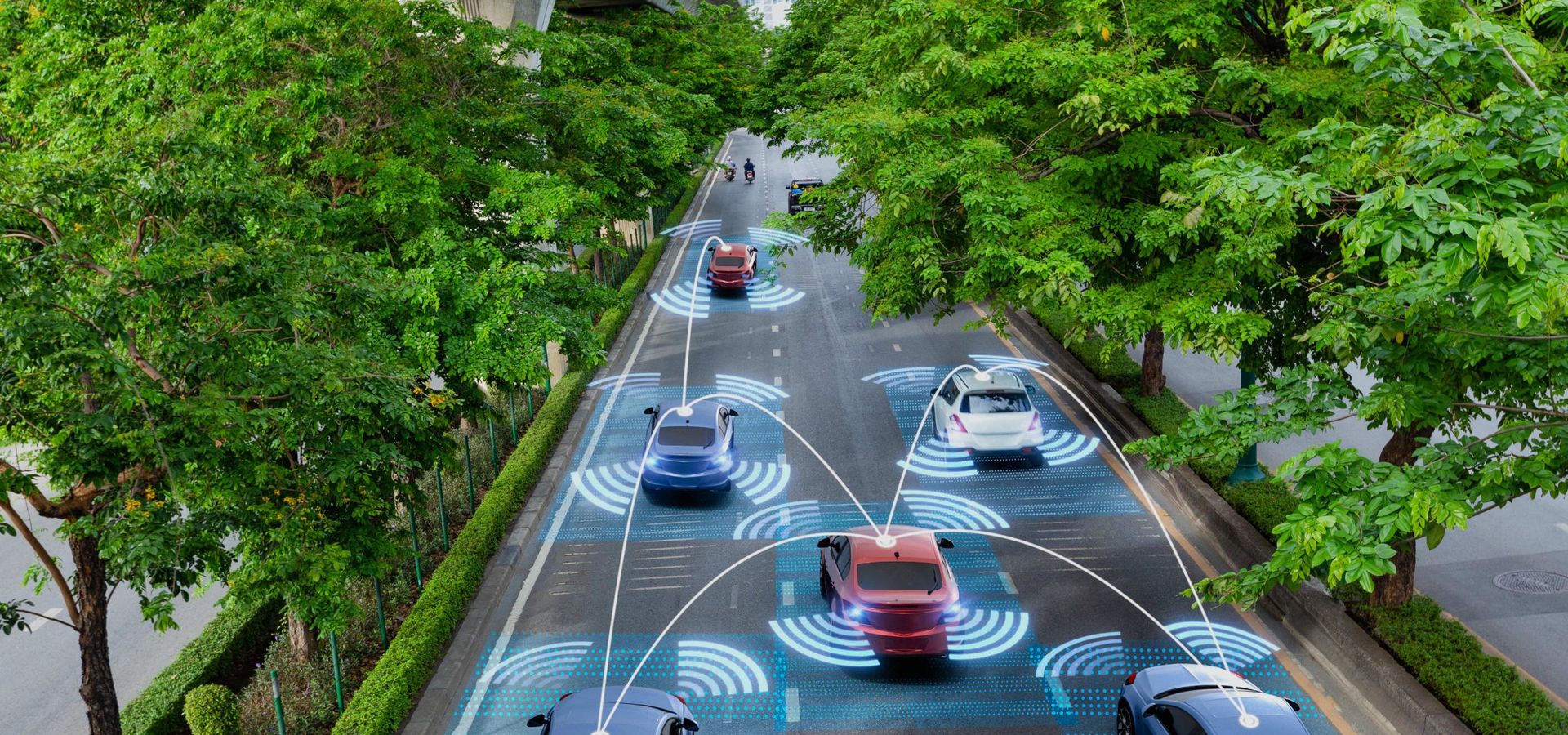
IoT data analytics: benefits, use cases & main challenges
December 27, 2023
Backed by 25+ years of experience in IoT software development, Itransition explores how IoT data analytics can solve business problems, optimize operational efficiency, and make valuable predictions for the future.
IoT data analytics market state
The growing demand for fast and reliable decisions based on relevant operational data drives the upsurge of the IoT data analytics market, stimulating the development of more and more sophisticated analytics solutions.
the value of the global IoT analytics market in 2022
Exactitude Consultancy
the projected value of the IoT analytics market by 2029
Exactitude Consultancy
North America’s share of the global IoT analytics market
Exactitude Consultancy
The architecture of IoT data analytics
IoT devices gather enormous amounts of data daily. The data is transferred to the IoT gateway that facilitates back-and-forth data transmission between IoT devices or sensors and next to the IoT data processing layer using different communication protocols like MQTT, HTTP/HTTPS, or Zigbee. The IoT data analytics layer is where data from various IoT devices and sensors turn into valuable insights. IoT analytics consists of several components that work as an entity.
Data storage
IoT data storage accumulates information collected from IoT devices for further processing and analysis. IoT databases store historical, operational, and real-time data to be easily searchable and accessible.
Data processing & analysis
At this stage, the information is processed to be clear, consistent, and ready for further analysis. Data processing and analysis techniques include data cleansing and mining, regression, factor and time-series data analysis, and machine learning techniques that help identify various patterns and relationships from the datasets.
Data visualization
At the application layer, the processed and analyzed data is presented to users in meaningful and user-friendly formats like table sheets, dashboards, graphs, and charts to quickly and effectively make informed data-driven decisions.
Ready to boost your business with IoT analytics tools?
Top Internet of Things analytics use cases
Inventory management
RFID tags, barcode scanners, and other sensors allow companies to gather real-time data streams of inventory levels, thus helping shop managers make informed decisions on when to reorder goods and in what quantities. IoT analytics can also help predict based on the demand which products will most likely be in deficit soon.
Store layout optimization
IoT data analytics tools help increase the sales of unpopular products or goods with a short shelf life. IoT sensors can track customer behavior and interactions across the shop floor and suggest optimal layout options for better sales.
Personalized marketing
With IoT sensors gathering terabytes of information on how people interact with particular goods or services, marketing managers can make their advertisement campaigns more targeted and personalized, presenting consumers with context-sensitive content and generating more revenue.
Healthcare
Patient monitoring
Healthcare IoT devices facilitate remote patient monitoring, gathering information on their temperature, blood pressure, sugar levels, or oxygen saturation. IoT applications can gather patient data, employ data analytics techniques to analyze it and recommend treatment or alert doctors in critical cases. Using machine learning capabilities, IoT analytics can detect signs of illnesses ranging from minor sleep dysfunctions to possible cancer.
Healthcare facilities management
IoT data analytics tools can provide a clear overview of the overall healthcare facility. Data from all hospital departments, like bed capacity, patients’ conditions, scheduled appointments, staff occupation, and even energy consumption, is gathered into a unified database. There, it can be stored and processed to help hospitals make informed decisions on patient room and doctors’ availability, the best treatment, and energy use optimization.
Medical research
IoT analytics-generated insights can prove useful for medical research, especially in the fields of developing new treatment options and vaccines. For instance, the health research DETECT by Scripps Research uses data obtained from wearables like Fitbit or Apple Watches to gather information about COVID-19.
Manufacturing
Equipment predictive maintenance
Factories can leverage industrial IoT (IIoT) and big data analytics capabilities to monitor the performance and condition of manufacturing equipment. IoT sensors capture data from equipment components and transmit it to the cloud database for further analysis with computer vision and ML algorithms. Then, predictive maintenance models can accurately forecast equipment failures and schedule maintenance work.
Energy management
Similar to manufacturing equipment condition monitoring, enterprises can track how their facilities and employees consume energy and apply IoT analytics to detect inefficient use patterns and rectify them, saving significant costs.
Production line optimization
With IoT sensors embedded around the production site, factories gather real-time information about production line performance. Relying on IoT analytics, you can improve the overall equipment effectiveness of any machine at the node level, reduce equipment downtime, remotely manage manufacturing operations, ensure the health and safety of your employees on the production floor, and establish control over the end-product quality.
Logistics
Vehicle predictive maintenance
Vehicle sensors collect data on multiple aspects of the vehicle's condition, from fuel consumption to oil levels and engine temperature. IoT analytics then processes the information and predicts when the vehicle requires maintenance and components upgrade, helping prevent breakdowns on the road.
Delivery chain optimization
IoT solutions can significantly increase the accuracy of goods delivery and help ensure produce safety in transfer. IoT analytics mechanisms can automate the process of finding the most optimal route by taking into account vehicle location and weather as well as traffic conditions gathered with multiple IoT sensors and GPS systems. In addition, manufacturers of perishable goods or medicine can ensure specific temperature levels during delivery by monitoring and managing cooling systems.
Smart cities
Energy management
IoT systems with data analytics capabilities play a key role in smart grids, responsible for efficient and sustainable energy management in cities. IoT analytics platforms process real-time data from smart electrical meters and help city management get actionable insights on how to respond to the power needs of citizens, enterprises, and institutions.
Traffic management
IoT sensors placed on road signs, smart traffic lights, and video cameras contribute to more effective management of traffic. Smart traffic solutions powered by IoT analytics can detect traffic patterns or high vehicle density and adjust traffic light timing accordingly.
Agriculture
Smart irrigation systems
Field sensors will collect metrics on soil moisture and water usage in real-time and transmit them to a cloud analytics engine that will switch the water on or off. Farmers can also get data-driven insights into plant moisture stress and effectively address water leaks.
Smart livestock management
With IoT sensors, farmers can gather real-time data on livestock health conditions like their heart rate or temperature, monitor animals' reproduction cycles, and track cattle locations anywhere. The IoT analytics center will analyze gathered information and inform farmers of possible livestock health issues or illnesses.
Real estate
Preventive building maintenance
Commercial real estate specialists can benefit from IoT-enabled preventive maintenance systems and integrated predictive analytics. IoT systems will gather sensor data, analyze it, and alert owners of possible leaks in kitchens and bathrooms or HVAC, elevator, and other equipment malfunctions.
Optimized building energy consumption
IoT solutions can analyze the total energy consumption levels with the help of embedded IoT sensors. Then, IoT analytics can detect systems with high power consumption and help reduce it. For example, if sensors detect that there’s no one in the room, the window is open, and the HVAC system is on, it can automatically switch off the conditioning system or alert the owner, making power consumption more sustainable.
Improved building operations
Implementation of the right sensors can drastically improve building management. Smart cleaning systems can use IoT data analysis to plan optimal cleaning schedules, video cameras, and security-related sensors can send alerts to building security personnel in cases of emergency, and dedicated equipment sensors can detect and even prevent failures.
IoT data analytics in real life
Precision manufacturing for Audi vehicles

Image title: Audi vehicle manufacturing
Image source: intel.com — Audi Precision Manufacturing
Smart agriculture for Deep Sky Vineyard
Carrier’s platform for cold chain optimization
Taggle’s smart solution for city water supply
Best platforms for IoT data analytics
- Configure IoT analytics with the help of MQTT topic filters to receive data from IoT devices only in required formats and frequencies.
- Detect missing data, enrich data with external sources (like weather forecasts), and transform and reprocess raw and historical data.
- Time-series data storage, as well as storage of processed and raw data.
- Quickly run ad hoc or scheduled data queries with the in-built SQL query engine.
- Continuously monitor your devices and predict maintenance with time-series data analysis.
- Run a statistical analysis and forecast events and failures with pre-built Jupyter Notebook templates that include AWS-based machine learning models and visualizations.
- Connect AWS IoT Analytics with third-party, custom or built-in AWS IoT analytics code containers, and automate and schedule your custom analysis.
- Capture data incrementally and customize time windows for analysis.
- Connect to Amazon QuickSight for data visualization.
Considerations
AWS data retention policy
Your data will be stored indefinitely unless you set up a retention period, after which it will be deleted.
Complicated pricing system
The final cost of AWS IoT Analytics will depend on the amount of data ingested, processed, stored, and transferred.
- Ingest IoT raw data with Azure IoT Hub and send it to Azure blob, where you can store, view, and process it.
- Azure Stream Analytics will analyze streaming data and perform real-time analytic computations with data from sensors and devices.
- Store the analyzed data in the Azure SQL database.
- Access operational data, discover trends, and identify patterns and anomalies with Azure Time Series Insights.
- Azure Data Explorer will perform analysis of large volumes of structured and unstructured data with the ability to run ad-hoc queries and apply machine learning models.
Considerations
Complex pricing system
You need to carefully plan your future data operations since every Azure service is charged separately.
Risk of vendor lock-in
If your needs change and you want to migrate to another provider, the transmission to another provider may be challenging.
IoT data analytics implementation guide
Successful integration of an IoT analytics solution into your business workflows requires clear objectives and a step-by-step implementation plan. Here are the main steps of the IoT analytics implementation roadmap.
1
Define achievable goals
2
Outline data collection mechanisms
3
Set up data storage & management
4
Orchestrate a data analysis system
Implement mechanisms and algorithms for future data analysis, like BI tools, machine learning, statistical analysis, and predictive modeling, to derive valuable insights from historical and real-time data.
5
Introduce data visualization
6
Introduce security measures
7
Integrate IoT analytics with business systems
8
Train end-users
9
Ensure continuous improvement
IoT analytics challenges & potential solutions
IoT data analytics is a highly complex business solution, so companies are likely to face some challenges when implementing it. Let’s review the most common obstacles and what can be done to overcome them.
Challenge
Solution
Data quality
The success of IoT data analytics significantly depends on the quality of raw data gathered by IoT sensors. The most common data quality issues include data spikes, missing values, measurement deviations due to degradation of sensing materials, and noisy data.
The success of IoT data analytics significantly depends on the quality of raw data gathered by IoT sensors. The most common data quality issues include data spikes, missing values, measurement deviations due to degradation of sensing materials, and noisy data.
First, set up regular check-ups of the sensors’ health and provide regular firmware updates. Most importantly, ensure proper data management by employing data science techniques like data cleansing and mining, regression and cluster analysis, anomaly detection, and pattern recognition.
Data volume & velocity
Companies can struggle to store, process and analyze big data gathered by multiple IoT devices.
Companies can struggle to store, process and analyze big data gathered by multiple IoT devices.
Combine cloud computing with fog and edge computing. It will reduce the processing load on the cloud by shifting the analysis of some data closer to the edge. We also recommend adopting machine learning and artificial intelligence techniques to speed up data processing and further decision-making.
Real-time analytics constraints
For many IoT solutions, like self-driving cars or equipment monitoring systems, real-time or near real-time data analysis is obligatory, since a slight delay at the wrong time can lead to disastrous consequences.
For many IoT solutions, like self-driving cars or equipment monitoring systems, real-time or near real-time data analysis is obligatory, since a slight delay at the wrong time can lead to disastrous consequences.
Adopting edge computing and machine learning capabilities in addition to IoT analytics platforms, as well as implementing real-time data processing frameworks, like Apache Storm or Flink, can help speed up data processing and ensure real-time analysis.
Scalability
IoT analytics solutions must be highly scalable to store and process massive and continuously growing amounts of data.
IoT analytics solutions must be highly scalable to store and process massive and continuously growing amounts of data.
To ensure IoT analytics scalability, along with sufficient computing network resources, companies should opt for cloud-based IoT solutions with edge computing capabilities, distributed databases, and parallel processing frameworks like Apache Spark and Hadoop.
Itransition ensures seamless IoT analytics adoption
IoT data analytics benefits
Real-time data analysis
The ability of IoT data analytics to collect and process data at any given moment can lay the groundwork for a more agile business.
Improved data accuracy
Advanced analytics mechanisms, along with machine learning and artificial intelligence, increase the accuracy and reliability of data analysis results, eliminating the possibility of human error.
Increased operational efficiency
By analyzing daily operations in real-time, organizations can swiftly identify existing or potential problems and take swift action to address issues or prevent them from happening.
Reduced operational costs
IoT data analytics solutions help utilize resources better, optimize production lines and energy consumption, and improve inventory management, thus decreasing organizational expenses.
Better risk management
IoT data analytics can identify patterns implicating a potential hazard or security breach and suggest preventive measures. This considerably increases safety in such sectors as manufacturing and healthcare.
Better sustainability policy
Organizations can use IoT data analytics insights in their sustainability initiatives. Businesses can optimize their energy consumption across production floors, shops, smart homes, or offices, becoming more sustainable.
Make use of data with IoT analytics
IoT data analytics has drastically changed business operations across industries. Despite certain challenges and rather high implementation costs, investing in IoT analytics is sure to prove economically viable. Operations automation and optimization based on reliable data-driven insights enable more strategic thinking and the discovery of new business opportunities. If you are looking for a vendor to implement an IoT analytics solution and change your business once and for all, Itransition experts are ready to help.

Service
Internet of things software development
Professional IoT development services to deliver IoT solutions that efficiently manage the network of connected devices and generate real-time insights.

Case study
IoT device management software
Learn how Itransition built a custom iOS app for managing air humidifiers at any location and getting accurate interior climate statistics.

Case study
Wellness platform development for a US healthtech company
Read how Itransition developed a SaaS wellness platform for a US healtech startup, now boasting 100,000+ registered users.

Insights
Enterprise IoT: top 7 use cases, real-life examples, and trends
With enterprise Internet of Things on the rise, Itransition shows why companies need to use this trending technology to create smart workplace solutions.

Insights
IoT in manufacturing: 8 use cases, technologies & examples
Discover how IoT can help manufacturers optimize supply chains, energy management, enhance inventory management, improve product performance, and boost revenue.